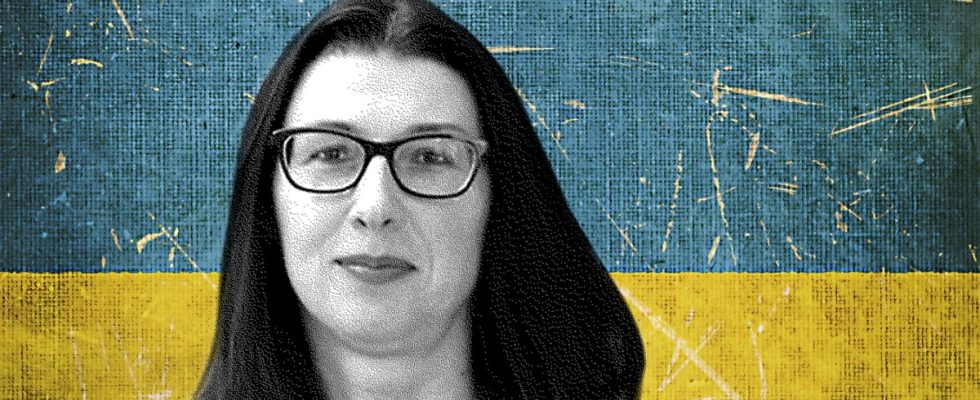In Ukraine, grave care in the period before Easter is a tradition, a duty, a way in which we commemorate our dead. “Go to the graves,” they say. All of our family’s graves, except my father’s, are in the Galician village where both parents come from. My sister and I take care of the resting places of our ancestors on my mother’s side, our cousin takes care of the others on my father’s side, they are two different cemeteries because they were originally two places, separated by the Seret river.
We go there two weeks before Easter to do our duty, even though we no longer have a house or farm in town. The Galician village is very far away from the war, but the war – not only the current one – is there in its subtle form too. The grave inscription for my maternal great-grandfather reads: “Killed for the homeland in the 1915 war”. But he is not lying next to his wife, who was widowed at 20 and had lived for 82 years. It’s only the old tombstone that reminds of him, otherwise all we know is that he fell in the Carpathians, somewhere. The inscription on the double grave where my grandmother and her father are buried also commemorates my maternal grandfather, whose remains are also far away from his hometown. We also don’t know where exactly, he was missing, the last letter came from Königsberg. “Killed in the War 1945”. Both wars were history for us, there is not even a photo of the great-grandfather, but at least one or two of the grandfather. There are several similar stories in the village.
Now a new history of the war is being written, on the new part of the cemetery there is a grave with the national flag and the precise dates of his life: “07/31/1990 – 07/09/2022”. It is the first fallen from the village with almost one and a half thousand inhabitants, the son of a third cousin; The family in the country is close, they know each other well. About eighty men from the village are at the front, one does not want to think that more graves could be created here.
A military cemetery in Lviv, Ukraine.
(Photo: Adrien Fillon/Imago)
On the way back to the city, I receive a message from V., the dermatologist from Velykyj Kuchuriw, one of “my” internally displaced persons with whom I am in regular contact. V. asks me to translate a letter into German, she is trying to get a device for high-frequency electrosurgery through an aid organization, which she needs to treat her patients. She was advised to put the request in writing. I promise to translate it later. When she asks what I’m doing right now, I’m writing about grave maintenance. V’s reaction is prompt: “I so long to go to our cemetery. All my loved ones stayed there: father, brother, grandma, grandpa, stepfather. I took care of the graves every year, two years ago we made new gravestones , planted a lot of flowers and shrubs. And now we saw a drone shot, everything is black there…”
V. means the area around Wolnowacha and Wuhledar in the Donbass, where heavy fighting has been devastating the places of the living and dead for months. I am thinking of the words of another young woman from Marjinka in the Donetsk region, who said that the cemetery where her grandparents lie is reduced to dust and ashes. I try to imagine it, but my imagination fails. A cemetery where stone, wood and metal is supposed to stand guard over the ashes of the deceased becomes ashes and dust itself. Modern long-range weapons can do this: A place of remembrance with many, many places of personal memory is destroyed. Can you at least make out the outlines of the graves later?
I am doing the translation for V. and I am looking for information about a certain place in the Kharkiv region for an acquaintance in Germany. I come across a news portal in the area. A post from March 30, 2023 warns against visiting cemeteries, several cemeteries are completely closed – they are mined or there is an increased risk of duds. “Many residents in Kharkiv and the region are not allowed to visit the cemetery at Easter this year either,” reads the first sentence. But at least, it could be added, they still have hope there of seeing the graves of their loved ones again at some point. For many other people in Ukraine this is no longer possible.
Read more episodes of this column here.

